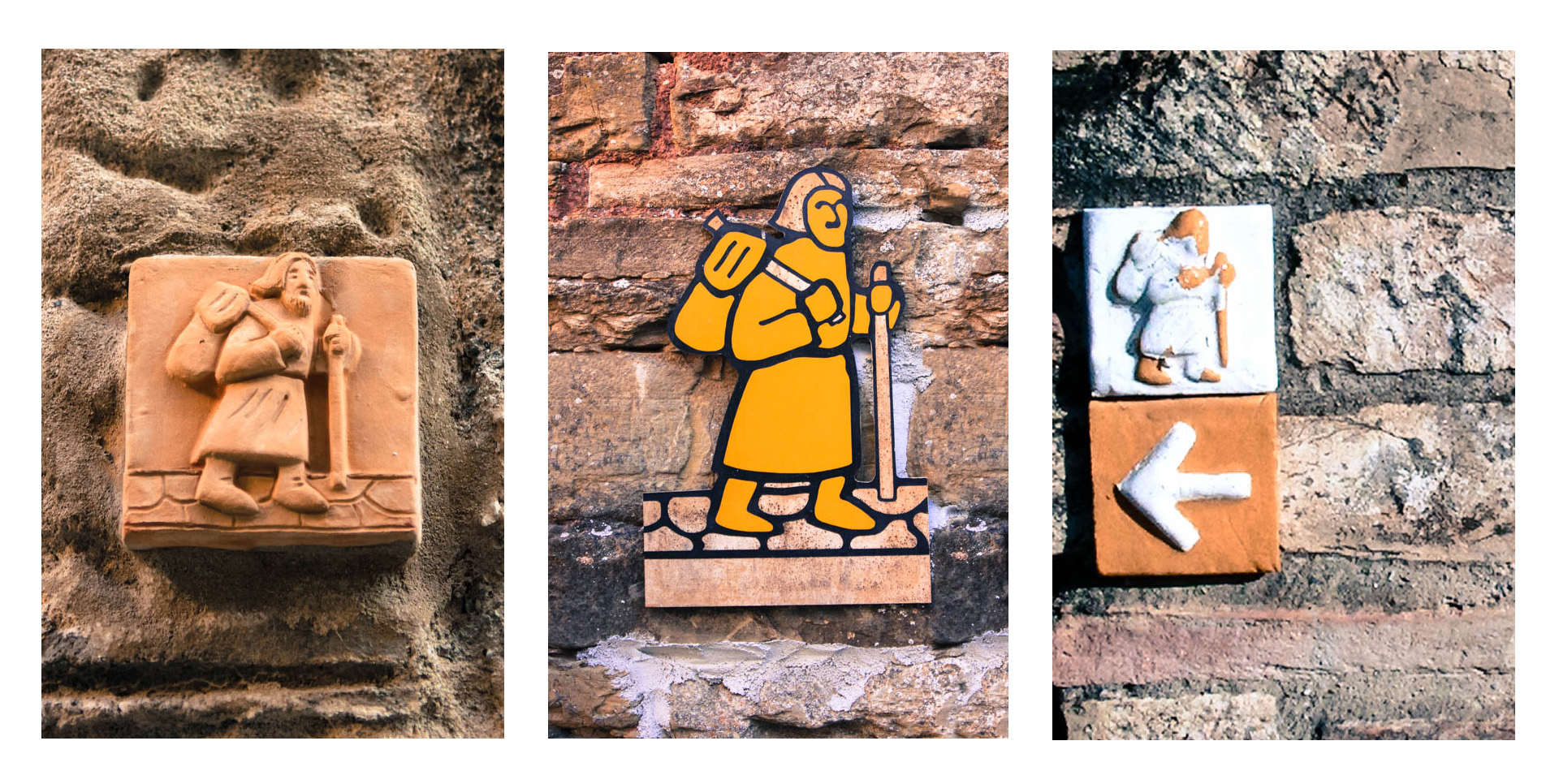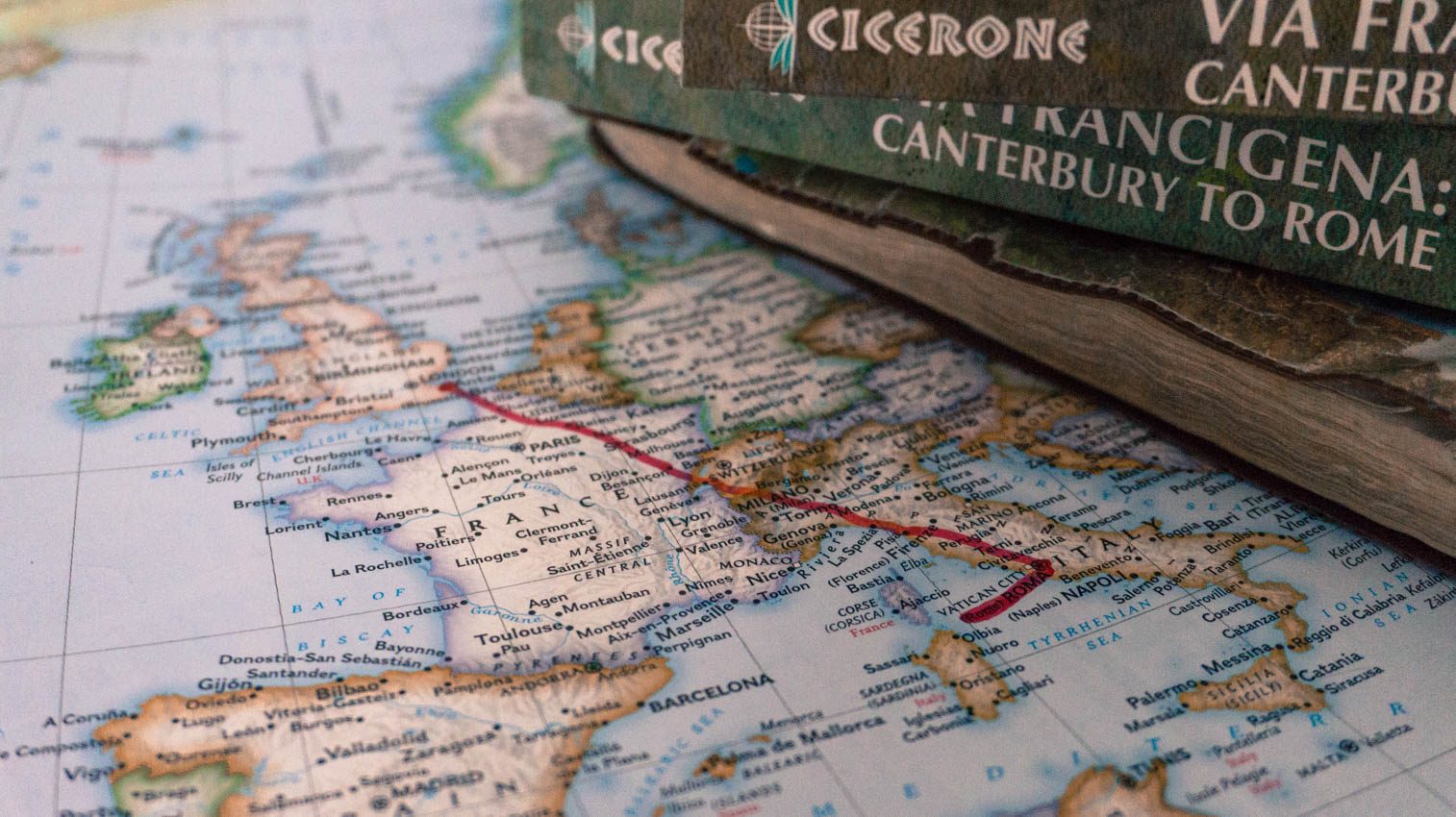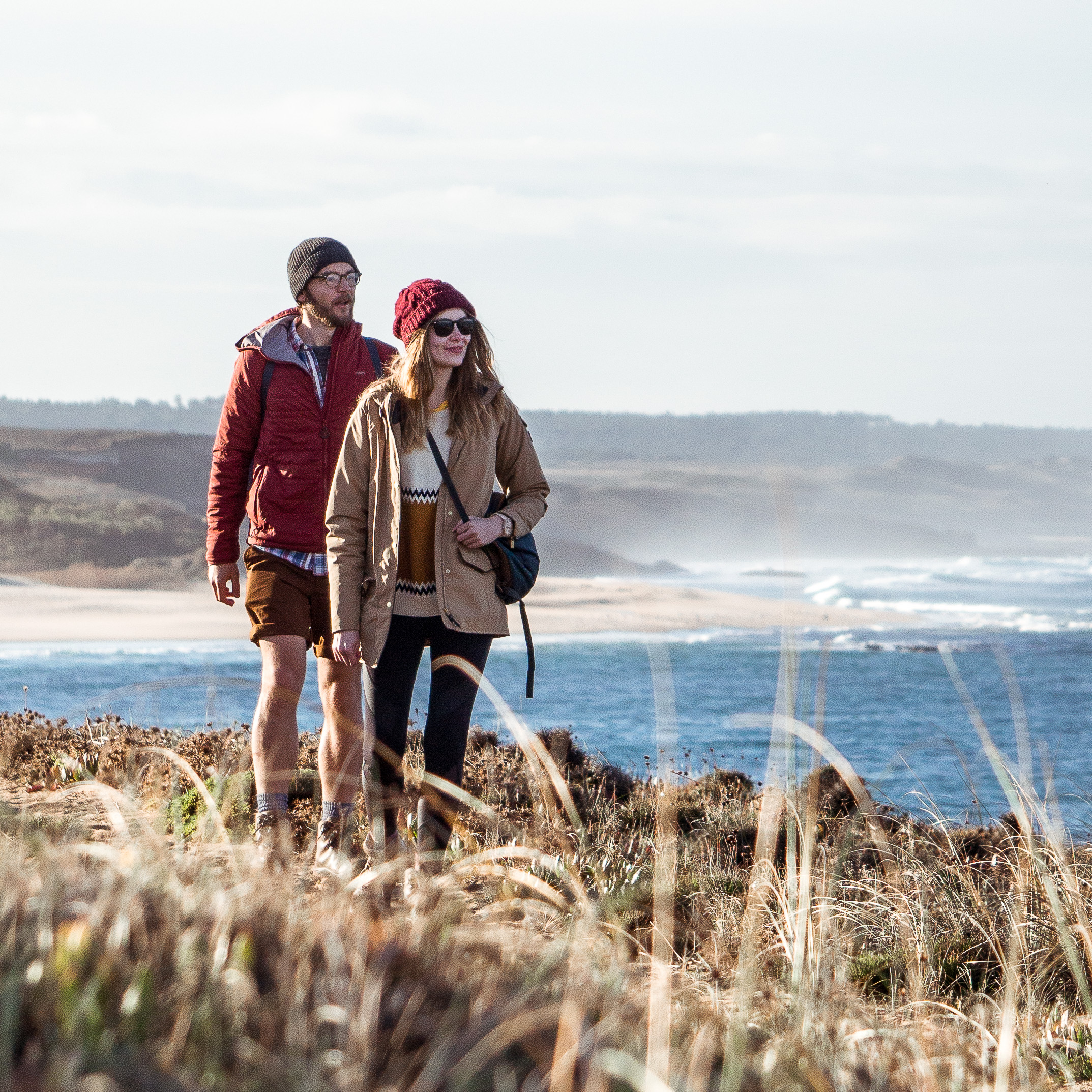Walk: the Via Francigena (‘road through France’) |
Distance: 2,000km (1,200 miles) |
From: Canterbury, UK to Rome, Italy |
Time: Four months (for us) |
First: you can read all about who we are here.
But really first: What’s the Via Francigena? And why did we choose to walk it? Good questions.
Chances are, you won’t have heard of it, and neither had we. But in 2016 while working in Tuscany, we noticed this beguiling little guy everywhere:

We asked around, and soon found out he signposted an old, old, travel route, called the Via Francigena (see above for how you say that). It was a pilgrim path that sliced straight through the region we were living in, on its way to Rome. And what’s more, it started in Canterbury in the UK, our home country. Aaand in case you’re wondering, that’d be a casual 2,000km.
We became quite fixated on this secret little route through Europe. We asked our Italian neighbours about this ‘amazing walk we’d discovered’. They shrugged and nodded, quite familiar with it, gently correcting our appalling pronunciation.
We got our travel stuff out to have a look at it. It’s rather impressive:

Take a deep breath, as this is the itinerary:
Starting at Canterbury Cathedral, you first pick your way down to Dover via the North Downs Way and hop over the Channel. Then, cutting across north eastern France you scale the Jura Mountains and push onward into Switzerland. Here you round the Eastern end of Lake Geneva, and go up over the Alps via the Great St Bernard Pass. Landing in the Aosta Valley on the Italian side of the mountains, the path passes between the powerhouse cities of Turin and Milan, before crossing down into Tuscany and pushing relentlessly on down to Lazio and, eventually, Rome.
And breathe out.
Related posts:
Within all that are some real travel highlights too: through the old battlefields and cemeteries of the Western Front, the vineyards of the Champagne region, the Alpine mountain passes usually covered in snow, the risotto rice fields of Vicelli, the Ligurian coast and Tuscan cities of Lucca and Siena. Oh yes, there’s a long, long list of places to explore along the way.
But apart from the incredible length and breadth of the walk, let’s talk more about it being a pilgrimage. It was first recorded in a little travelogue by the loftily named Sigeric the Serious, over 1000 years ago.
Pilgrims on the Via Francigena both then and now carry keys – the emblem of St Peter
whose Eternal City is the reward for all this effort. Pilgrims are also issued a pilgrim passport, a ‘credential’ to get stamped along the route. The walk is long and in centuries gone by it wasn’t clear if you’d actually ever come back at all. A risky, devout and exciting journey for an old sinner to catch a bit of Heavenly rays.
Now, it’s still tough for us: long days walking in all weathers, roughing it in mixture of campsites, pilgrim hostels and the odd Air BnB. But hey, at least there isn’t the prospect of arriving in Rome and then turning around and having to go all the way back…
It all sounds pretty ancient, we know. But a funny thing: walking pilgrimages are actually becoming more and more popular.
Last year over a quarter of a million people -religious and not- walked the Camino di Santiago in Northern Spain. And there are deep-trodden pilgrimages all over the world: like the Kumano Kodo Trail in Japan, Adam’s Peak in Sri Lanka, or the Inca Trail in Peru. That’s millions of pilgrims of all sorts alive today, trekking across huge swathes of land for days, weeks and months. What maybe shouldn’t feel very relevant or necessary to the modern day person, is, in some weird way.
Maybe not so weird as there are some obvious benefits. There’s the challenge: the risk, exertion, and achievement. There’s the wanderlust of travel generally, for sure. And the companionship, the being part of a deep human history, too.
But there’s also all this space. Enough to think, to breathe, maybe to mend. And time for more complicated things to take root too: hope, clarity, relief, and faith – of all sorts, including in yourself.
Interested? Come with us virtually:


Ciao belli!
When last year you came here in Volterra working with bicycles and touristes we had some months of fun. But the first time you told me your intention of walking the entire via francigena, from Canterbury to Rome, i didn’t trust you…But It seems i was terribly wrong! ?
What else…Have a nice trip, my friends and let me know when you’ll be quite near! Watch your feet!
A big hug from me, Sara and the whole farm! Ciao!!
Ciao Claudio e Sara, adoriamo il nome dell’indirizzo di posta elettronica – clasar!
We hope you trust us now, we will see you at the end of August!
A presto!
Luke & Nell xx
Greetings.
I understand you’ve started the walk today. I hope it goes well. I’ll be following you. Not ‘stalking’ you, of course. Just following the blog. xx
Thanks very much for the follow! Hope you are enjoying the blog and Instagram.
Hi you two!
You must be a couple of days into France. Spirits high after improving weather from rotten England end of last week. Well, the journey has started. All the sensible preparation will be worth it. Who will you meet? What will happen? Who knows? …..that’s why it’s called ‘an adventure’!
Good luck. Thinking of you
Geoff xx
Ha ha – thanks for this Geoffrey! xx
Hi
Just started to follow you two. What an adventure, I wish you both a great safe trip.
Can’t believe you are doing this. It’s AMAZING!!!
Good luck!!!!
Hi, just started following you two. Great! Will start the end of August walking to Rome, starting in Belgium. Which guidebook are you using? Lightfoot guide? Cicerone? Keep on going – good luck!
Hi Heleen, glad you found us! We will send you an email to answer your very important question… we will be covering this topic in a blog very soon as well.
How long is the whole journey? I really fancy it but my other half is like no way!
Hi Jude, the whole journey is long! We don’t know the exact length of our Via Francigena (we used three different guidebooks throughout the journey), but it is over 2,000km. Even though we took four months to do it, it is easily achievable in three, which most pilgrims we have met aim to do and in fact achieve. We just like looking around a lot!
“Vee-a Fran-CHEEEEE-gin-a” ? ? ?
—
Help, I’m a prisoner of my American-English upbringing.
Does “gin” (as above) sound as in “gin and tonic” or as the final
sound of “begin”? Perhaps my query might have been avoided if, as with “CHEEEE” if the pronunciation hint following had used a letter “j”?
Hey Henry,
Haha very good point! It’s ‘gin’ as in ‘gin and tonic’, but we can see that that can be confusing!
Luke & Nell
Hi Luke and Nell,
I’m planning the VF from Lake Geneva to Rome next year (perhaps June of ’22). A walker friend of mine did this 12 years ago and she said that she did it all without a map and without a plan. Each day she would just show up in town and look for something to eat and a place to stay. Given that it’s been a dozen years and things change, I’m wondering if the VF books I’m reading are too persistent about calling ahead for lodging and other such “plan ahead” stuff. My friend thought that the freedom of no plans allowed her the experience of the original walker, one who found something new every day. On that walk she met up with another woman who was doing the entire walk penniless…counting on the kindness of strangers and angels to get her where she was going. Yes, some days she didn’t eat; yet for better or worse that made the walk even more special. I don’t know…I’m a planner. I could have my entire month’s itinerary laid out on paper (me old school), yet that seems too rigid and lacking in the grace of “let go and let God”. Your thoughts? Thanks for all of your writings. Andy
Hi Andy, I hope you managed to walk the VF last year? If you’re still planning -you probably have the full itinerary by now!- what I would say is you could do it as the original walker and just go town to town, and the kindness of strangers would get you a place to stay each evening. The VF reaffirms to you that people are so, so decent. But there are some busy spots, like the top of the Alps where you pass over from Switzerland to Italy, where there just isn’t the space. They would likely move you on to further down the mountains into Italy where there’s a refuge..! Sounds like you want to be brave and just go it day by day though. Happy trails!!
Thinking of doing three uk walks in a warm up to via Francigena from Canterbury
John Muir way/ Antonine …. Hadrians … Wainwrights ….. to get ( maybe Thames path ) some cool climate hiking acclimatisation
Trying to pick St Bernards late summer …. determines the other walks start time ….
Any suggestions ?
Hi Tony, good idea getting some trail time in beforehand. We did the Coleridge Way Somerset/Devon, which was fantastic. And walked almost every day from where we were based in the Quantocks at the time. Hadrians Wall stands out to me as it would be a great one to have under your belt anyway! Most important preparation though is to get the miles into your legs and get used to the weight on your back! When are you planning on heading off on the Via? Happy planning,
Luke
Hi Luke and Nell. I’m planning on doing the full walk in 3 years when I’m 70. Following.
Delighted to hear this, Gwen – happy planning!